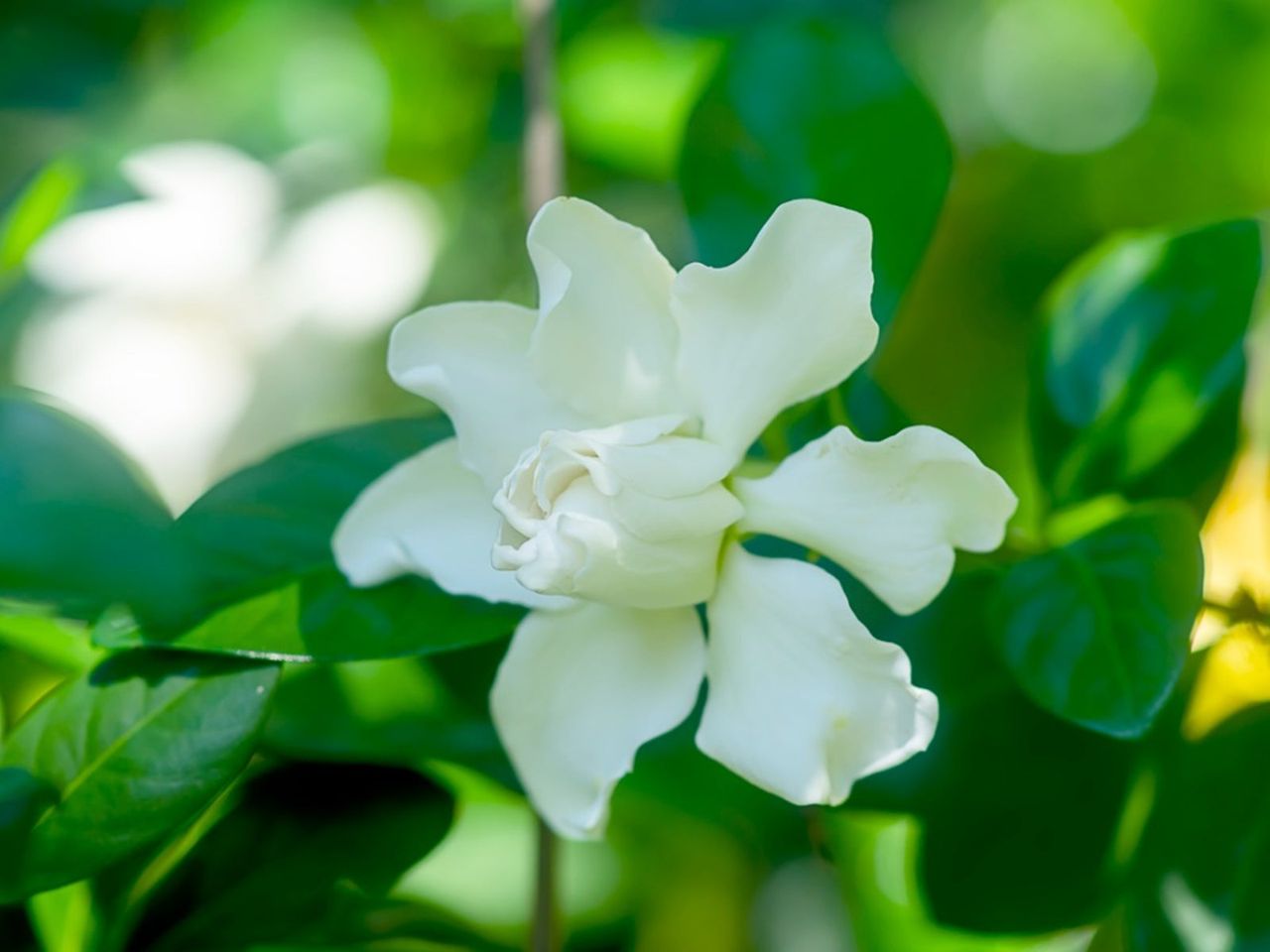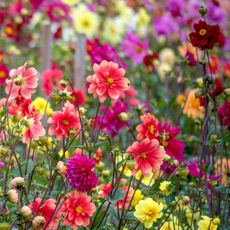How To Care For Your Gardenia Plant


Tonya Barnett
Flower gardeners have long been lured by the charms of the gardenia plant. The shrubs are most commonly grown in the South in planting beds near homes, patios, or along paths. This allows for passersby to better enjoy their incredible scent, which is usually most prominent late in the evening or at night. Though their flowering period extends throughout spring, it's not uncommon for the plant to bloom sporadically during warmer months as well.
Known for its beautiful foliage and intoxicating fragrance, it's easy to understand why so many are tempted to add this stunning specimen to the home landscape. However, these popular evergreen shrubs are known for their finicky needs. In fact, in some areas, gardenias require considerable maintenance.
Planting gardenias successfully requires careful research in order to ensure that the plant’s specific needs are met.
Quick Facts about Gardenias
- Botanical name - Gardenia jasminoides
- Height - 3 to 6 feet (1-2 m.)
- Spread - 3 to 4 feet (1 m.)
- Sun exposure - Full to Part Sun; Afternoon Shade
- Soil requirements - Acidic
- Hardiness zones - USDA 7 to 10
- When to plant - Spring, Fall
Outdoor Gardenia Care
There are several factors to consider before planting gardenias. The selection of an ideal planting site is key. Getting the light right is important, as is the soil. And, of course, there's the weather to think about.
Can you leave gardenia outside in winter?
Gardenias won't be killed by frost, but they are cold-sensitive and may die during severe winters. Growth and flowering will slow if night temperatures start to fall below 60 F (15 C). Most gardenias can withstand temperatures down to 20 F (-7 C), though dwarf varieties tend to be less cold hardy.
If your gardenia is killed by frost, don't give up. It can sometimes grow back from the roots in the spring.
Because of their minimal cold hardiness, gardenias are typically grown outdoors in climates with mild winters, or grown in pots and moved indoors for winter. Fall or spring is the most suitable time for planting outdoors.
Gardening tips, videos, info and more delivered right to your inbox!
Sign up for the Gardening Know How newsletter today and receive a free copy of our e-book "How to Grow Delicious Tomatoes".
Sun
Though it's possible to grow gardenias in full sun, most will perform best in partial shade -- that is, locations which receive early morning sun but are shaded from direct sun during the hottest parts of the day.
Soil
Gardenias prefer moist, but well-drained, rich, acidic soil with plenty of organic matter. Amend your soil with compost and manure and, in the case of alkaline soils, blood meal or acidulating fertilizer.
Watering
Though the shrubs require soil that drains well, consistent moisture throughout the growing season is much needed. This means that routine watering will be an essential aspect of their continued care, specifically during prolonged periods of drought and/or extreme heat. The use of mulch may be especially helpful to better maintain consistent moisture levels within beds.
Fertilizer
Seasonal application of a slow-release fertilizer will help to promote new growth and increase bloom. A fertilizer that is specifically formulated for acid-loving plants, such as those used with azaleas or camellias, is generally the best option. Be careful not to over-fertilize gardenia plants. Too much fertilizer can lead to salt accumulation, which can damage the shrub.
The ideal time to begin feeding gardenia bushes is in the spring, just after all chances of frost have passed. After flowering, the frequency of feeding should be reduced, and then cease as fall approaches. Do not fertilize gardenias in the fall, because it can stimulate growth. This tender, new growth will quickly die when exposed to cold winter temperatures.
Pruning
Many growers may find it necessary to prune gardenia plants in order to maintain their desired size and shape. This is best done in late spring or early summer, after the plants have stopped blooming. At this time, dead or damaged branches may be removed from the plant, as well as any faded flowers.
Problems
Though gardenias are considered to be resistant to deer and other browsing animals, they may encounter issues with insects. Common pests that feed on gardenias include whiteflies, aphids, mealybugs, and spider mites. Fortunately, most infestations are fairly easy to treat. Common gardenia diseases include chlorosis, powdery mildew, mold, and root rot.
Symptoms affecting the plant’s waxy foliage, such as wilted or yellow leaves, are often the first signs that the plants may be stressed.
Indoor Gardenia Care
The gardenia plant can also be successfully grown in containers and treated like houseplants indoors. However, when growing a gardenia bush indoors, you must keep in mind that it requires bright light and high humidity.
The dry, short days of winter will likely be the most troublesome. The ideal temperature for gardenias is between 70 and 75 F (21-24 C) during the day and 60 to 62 (15-17 C) at night. Keep your plant away from doors and drafty areas to protect it from cold air. Moving it to a southern-facing sunny window and/or supplementing with grow lights are good ways to get as much direct sunlight as possible during winter.
High humidity is essential to indoor gardenia care. Dry air will quickly cause the flowers to begin dropping from the plant. There are several ways to increase humidity in the home, including the use of a humidifier or grouping plants together on trays of wet pebbles. Misting the gardenia plant is not recommended, as this may cause problems with fungal leaf spots.
The soil, which should be loose and organic, should be kept moist, but take care not to overwater. Monitor the soil frequently for moisture and water thoroughly as the top inch (2.5 cm) of soil dries.

Nikki Tilley has been gardening for nearly three decades. The former Senior Editor and Archivist of Gardening Know How, Nikki has also authored six gardening books.
- Tonya BarnettWriter
-
 7 Vegetables To Plant In April: Start Indoors Or Outside For A Bumper Summer Harvest
7 Vegetables To Plant In April: Start Indoors Or Outside For A Bumper Summer HarvestAchieve your growing ambitions with these best vegetables to plant in April – including cold-hardy crops to sow direct and tender varieties to start indoors
By Mary Ellen Ellis
-
 Cut Flower Garden For Beginners: 8 Easy Decorative Floral Plants For Newbies To Grow
Cut Flower Garden For Beginners: 8 Easy Decorative Floral Plants For Newbies To GrowAre you new to growing decorative florals for bouquets and ornamental displays? A cut flower garden for beginners is well within reach if you grow these flower seeds
By Tonya Barnett